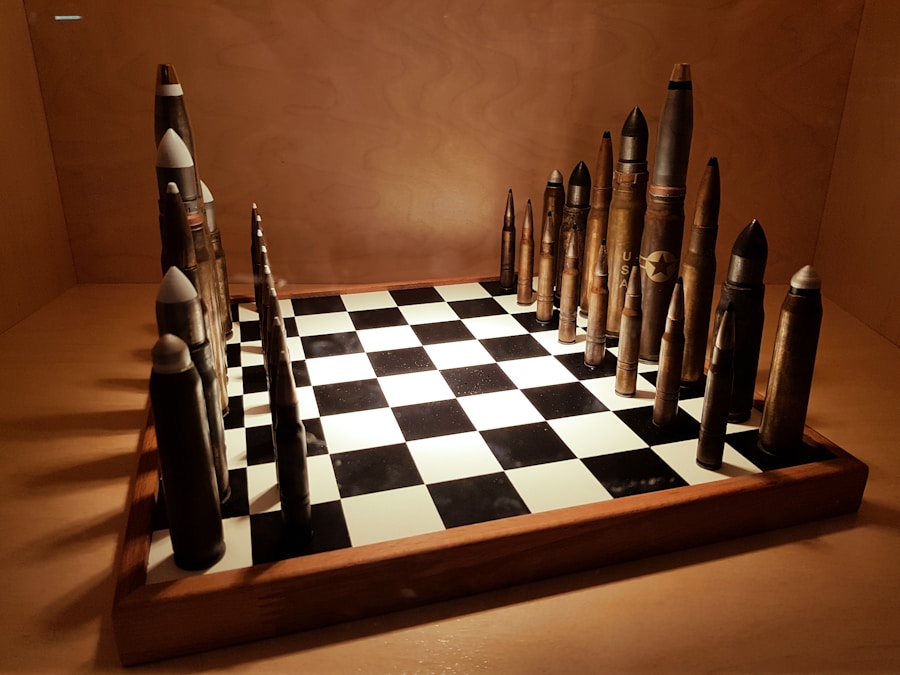Download links
How to install Mastering the Art of Chess: Strategies for Success APK?
1. Tap the downloaded Mastering the Art of Chess: Strategies for Success APK file.
2. Touch install.
3. Follow the steps on the screen.
Description
Chess is a two-player strategy board game that has captivated minds for centuries. The game is played on an 8×8 grid, known as a chessboard, where each player begins with 16 pieces: one king, one queen, two rooks, two knights, two bishops, and eight pawns. Each piece has its own unique movement rules, which contribute to the complexity and depth of the game.
The objective is to checkmate the opponent’s king, meaning the king is in a position to be captured and cannot escape. This fundamental goal drives all strategies and tactics employed throughout the game. The pieces move in distinct ways; for instance, rooks can traverse any number of squares along a row or column, while bishops move diagonally.
Knights possess a unique L-shaped movement, allowing them to jump over other pieces. The queen is the most powerful piece, combining the abilities of both the rook and bishop, while the king can only move one square in any direction. Pawns have a more complex role; they move forward but capture diagonally, and they can promote to any other piece (except a king) upon reaching the opponent’s back rank.
Understanding these basic movements is crucial for any aspiring chess player, as they form the foundation upon which all strategies are built.
Key Takeaways
- Chess is a game played on an 8×8 grid with 16 pieces on each side, each with its own unique movement and capture abilities.
- A strong opening strategy involves controlling the center of the board, developing pieces efficiently, and protecting the king.
- Tactical play involves creating threats and opportunities for capturing pieces, while positional play focuses on long-term advantages and maneuvering for better positions.
- Endgame techniques include king and pawn endgames, piece coordination, and understanding key concepts like opposition and zugzwang.
- Improving decision making and calculation skills involves evaluating different move options, considering opponent responses, and calculating potential outcomes.
- Developing a winning mindset requires confidence, resilience, and the ability to learn from losses and adapt strategies.
Developing a Strong Opening Strategy
A strong opening strategy is essential for setting the tone of the game and establishing control over the board. The opening phase of chess is characterized by piece development, control of the center, and king safety. Players often aim to control the central squares (e4, e5, d4, d5) as this allows for greater mobility and influence over the board.
Popular opening strategies include the Ruy Lopez, Sicilian Defense, and Queen’s Gambit, each with its own set of principles and tactical ideas. In developing an opening repertoire, players should focus on principles rather than memorizing specific moves. For instance, developing knights before bishops is often recommended because knights are typically more effective in the early game.
Additionally, players should avoid moving the same piece multiple times during the opening unless necessary, as this can lead to a loss of tempo. Castling early is also a key component of a solid opening strategy; it not only secures the king but also connects the rooks, preparing them for future action. By adhering to these principles and understanding various openings, players can create a strong foundation for their midgame strategies.
Mastering Tactical and Positional Play

Once players have navigated through the opening phase, they enter the midgame where tactical and positional play becomes paramount. Tactical play involves short-term calculations and combinations that can lead to immediate advantages such as winning material or delivering checkmate. Common tactical motifs include forks, pins, skewers, and discovered attacks.
For example, a knight fork occurs when a knight simultaneously attacks two pieces, forcing the opponent to choose which piece to save. Recognizing these patterns and being able to calculate variations quickly can significantly enhance a player’s effectiveness during this phase. Positional play, on the other hand, focuses on long-term advantages rather than immediate gains.
It involves evaluating the strengths and weaknesses of both players’ positions and making strategic decisions based on that analysis. Factors such as pawn structure, piece activity, control of key squares, and king safety are critical in positional play. For instance, having a strong pawn structure can provide a solid foundation for launching an attack or defending against threats.
Players must learn to assess their position critically and make moves that improve their overall standing on the board while limiting their opponent’s options.
Utilizing Endgame Techniques
| Endgame Technique | Success Rate | Time Saved |
|---|---|---|
| King and Pawn vs King | 85% | 10 minutes |
| Rook and Pawn vs Rook | 70% | 15 minutes |
| Bishop and Knight Checkmate | 60% | 20 minutes |
The endgame is often considered one of the most intricate phases of chess, where fewer pieces remain on the board and precise calculation becomes essential. Understanding endgame techniques can be the difference between securing a win or settling for a draw. Key concepts in endgame play include king activity, pawn promotion, and basic checkmating patterns.
The king transforms from a vulnerable piece into an active participant in the endgame; its centralization can be crucial for supporting pawns in their journey toward promotion. One fundamental endgame technique is knowing how to convert a material advantage into a win. For example, if a player has an extra pawn in an endgame scenario, they should aim to advance that pawn while simultaneously keeping their opponent’s pieces at bay.
Additionally, players should familiarize themselves with basic checkmating patterns such as king and queen versus king or king and rook versus king. These patterns serve as essential building blocks for mastering more complex endgames. By practicing these techniques and understanding theoretical endgames, players can significantly improve their chances of success when fewer pieces remain on the board.
Improving Decision Making and Calculation Skills
Effective decision-making and calculation skills are vital components of successful chess play. Players must constantly evaluate their position and consider various factors before making a move. This involves assessing threats from the opponent while also identifying opportunities for their own pieces.
A systematic approach to decision-making can help players avoid impulsive moves that may lead to unfavorable positions. One effective method is to apply the “three checks” rule: before making a move, players should check for any immediate threats to their pieces or king, consider their own threats against the opponent’s position, and evaluate whether their move improves their overall standing. Calculation skills are equally important in chess; they allow players to foresee potential sequences of moves and outcomes based on their decisions.
Practicing visualization techniques can enhance these skills significantly. For instance, players can set up positions on a board and try to calculate several moves ahead without moving the pieces physically. This exercise helps develop mental agility and strengthens one’s ability to anticipate an opponent’s responses.
Developing a Winning Mindset

The Power of a Growth Mindset
Embracing a growth mindset allows individuals to view challenges as opportunities for improvement rather than insurmountable obstacles. This perspective fosters perseverance during difficult games or losing streaks, encouraging players to analyze their performances critically rather than succumbing to frustration.
Managing Emotions and Pressure
Moreover, managing emotions during play is essential for maintaining focus and clarity of thought. Chess can be an intense mental battle where pressure can lead to hasty decisions or blunders if not managed properly.
Setting Goals and Enhancing Performance
Additionally, setting realistic goals—whether it be improving specific skills or achieving certain ratings—can provide motivation while keeping expectations grounded. By developing this winning mindset alongside technical proficiency, players can enhance their overall performance and enjoyment of the game.
If you’re a fan of chess, you may also be interested in reading about the benefits of playing chess regularly. According to a study mentioned in this article, playing chess can improve cognitive skills, memory, and problem-solving abilities. It’s a great way to keep your mind sharp and engaged. So next time you’re looking for a mental challenge, consider a game of chess!
FAQs
What is chess?
Chess is a two-player strategy board game that is played on an 8×8 grid. It is one of the most popular and enduring games in the world, with a rich history dating back over a thousand years.
How is chess played?
Chess is played on a square board divided into 64 squares, with each player starting with 16 pieces: one king, one queen, two rooks, two knights, two bishops, and eight pawns. The objective of the game is to checkmate the opponent’s king, which means putting the king into a position where it cannot escape capture.
What are the basic rules of chess?
Each type of chess piece moves in a specific way, and players take turns moving their pieces across the board. The game ends when one player’s king is in checkmate, or when a stalemate is reached.
What are the benefits of playing chess?
Chess has been shown to have numerous cognitive benefits, including improving memory, concentration, problem-solving skills, and strategic thinking. It is also a great way to improve patience and decision-making abilities.
Are there different variations of chess?
Yes, there are many different variations of chess, including speed chess (blitz and bullet), chess960 (also known as Fischer Random Chess), and team chess (such as bughouse or team relay chess). Each variation has its own unique rules and strategies.
Is chess considered a sport?
While chess is not a physical sport, it is recognized as a sport by the International Olympic Committee and many national sports federations. It requires mental skill, concentration, and strategic thinking, making it a competitive and challenging activity.





